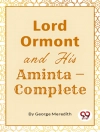In ‘The House of All Sorts, ‘ Emily Carr masterfully weaves an intricate tapestry of life on Vancouver Island during the early 20th century. This semi-autobiographical work reveals Carr’s keen observations of her surroundings, melding autobiographical elements with imaginative storytelling. The narrative unfolds in a uniquely vivid and expressive style, richly characterized by Carr’s deep affection and reverence for nature. It stands as a poignant exploration of human relationships, evoking the connection between a diverse cast of characters and the intricacies of their lives within an ever-changing landscape. Carr’s prose vibrantly captures the essence of the Canadian West Coast, both mirroring and enhancing the literary movements of her time that sought to encapsulate indigenous cultures and natural beauty. Emily Carr, a notable Canadian painter and writer, is renowned for her passionate commitment to portraying the spirit of the West Coast. Her experiences as a solitary artist among the indigenous communities profoundly influenced her work, instilling a sense of respect and reverence for the cultures that intertwined with her own. Carr’s artistic journey, marked by her exploration of solitude, belonging, and identity, culminates in this rich narrative, which serves as a testament to her vibrant imagination and introspective nature. Readers seeking a compelling narrative filled with rich detail and profound insight will find ‘The House of All Sorts’ both enchanting and enlightening. Carr’s heartfelt prose invites contemplation of the human experience, making it a must-read for those interested in Canadian literature, nature writing, and the intersections of art and life.
Про автора
Emily Carr (1871–1945) was a distinguished Canadian artist and writer whose work has become emblematic of the artistic and literary heritage of Canada. Born in Victoria, British Columbia, Carr was a trailblazer for women in the arts and is best known for her modernist and post-impressionist paintings of the lush landscapes and indigenous cultures of the Pacific Northwest. However, her literary contributions are also significant. Carr’s foray into writing later in life resulted in several published books, which include ‘The House of All Sorts’ (1944), a work that provides a poignant and often humorous account of her experiences running a boarding house in Victoria. Her written works reflect the same themes as her paintings, exploring the relationship between the environment, the divine, and the daily lives of people. Carr’s unique literary voice is marked by introspective musings and a deep connection to the natural world, mirroring her powerful visual representations on the canvas. Despite initial challenges in both her painting and writing careers, Carr’s work gained recognition and renown. Today, she is celebrated as one of Canada’s most iconic cultural figures, both for her visual art and for her literary oeuvre, which offers an enriching complement to her artistic legacy. Her pioneering spirit in both forms of expression has solidified her status as a key figure in the tapestry of Canadian art and literature.












